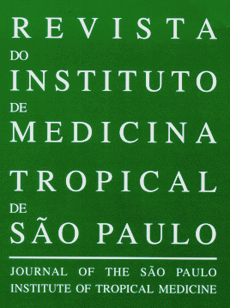Realizou-se inquérito sorológico para malária em escolares de Marabá — Pará, por meio de testes de imunofluorescência (IP) para anticorpos IgG e IgM, tendo como antígenos P. falciparum e P. gallinaceum, e teste de hemaglutinação (HAg) com P. gallinaceum. O teste IF-IgG com P. falciparum foi positivo em 6,94% dos 389 indivíduos estudados e o de P. gallinaceum em 11,56%, havendo concordância entre ambos os testes em 88,68% das amostras. No total, observou-se 14,91% de casos reagentes em qualquer dos testes. O teste com P. gallinaceum se mostrou mais abrangente provavelmente devido a maior prevalência na região de infecções por P. vivax. Ao se dividir a população estudada em faixas etárias de 6 a 10 anos (grupo A) e de 11 a 16 anos (grupo B), observou-se diferença significativa de reatividade ao teste IF-IgG com P. falciparum (2,68% para A e 10,94% para B) mas não com P. gallinaceum (10,10% para A e 12,97% para B). Para os testes IF-IgM houve positividade de 2,83% na população, e para o teste de HAg de 1,80%, sem diferença significativa entre os grupos etários A e B.
